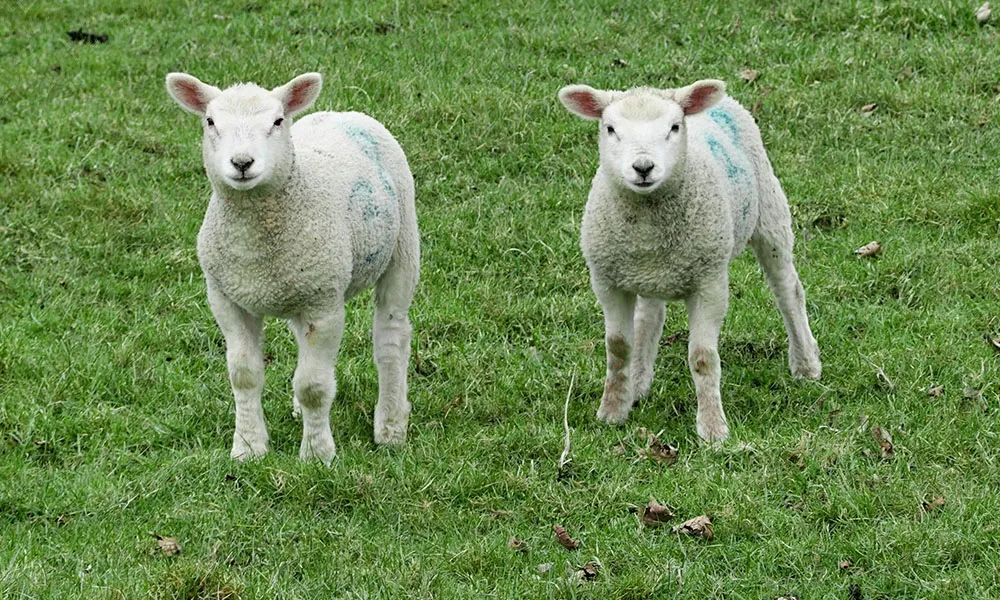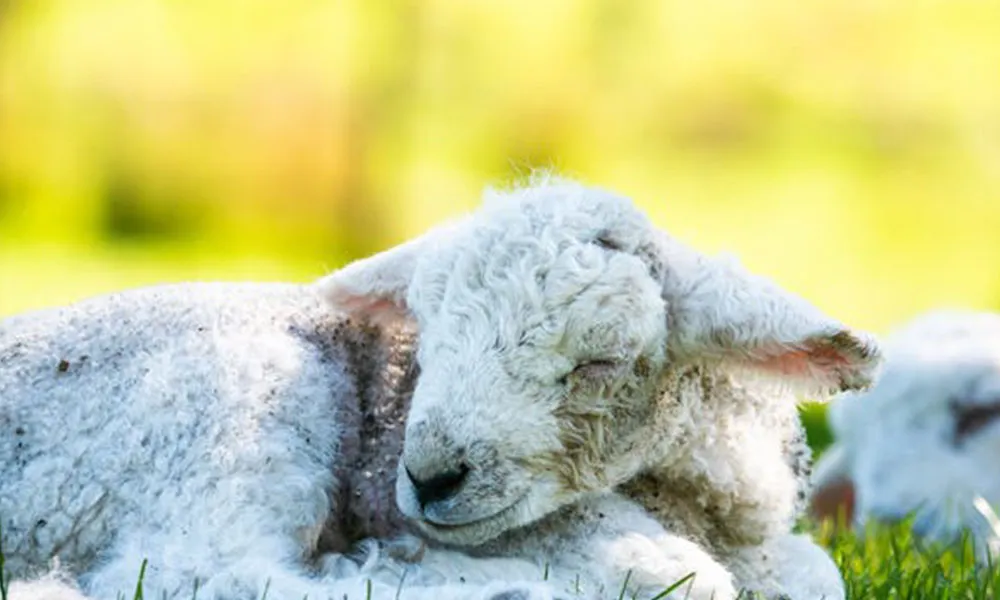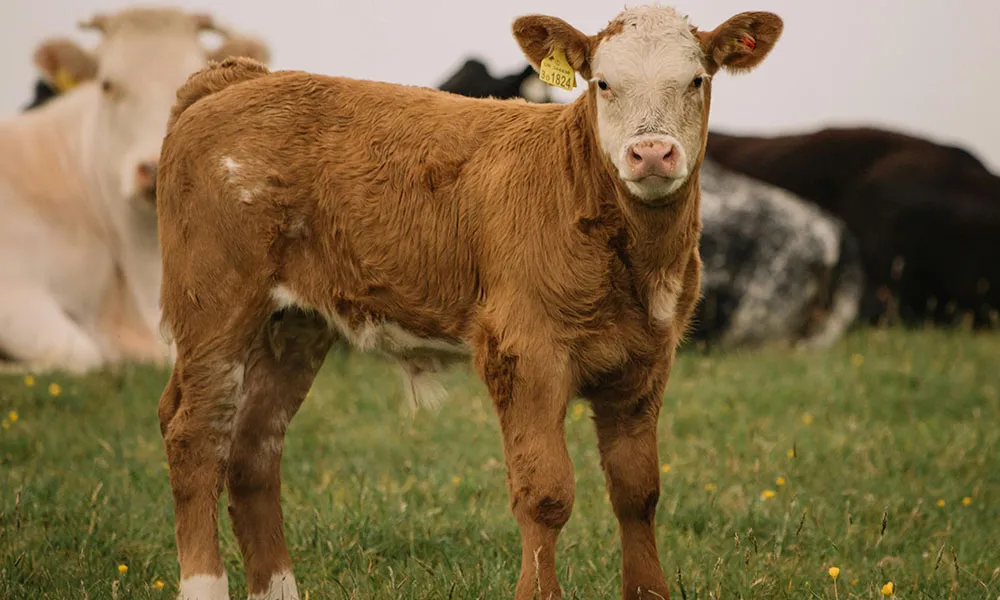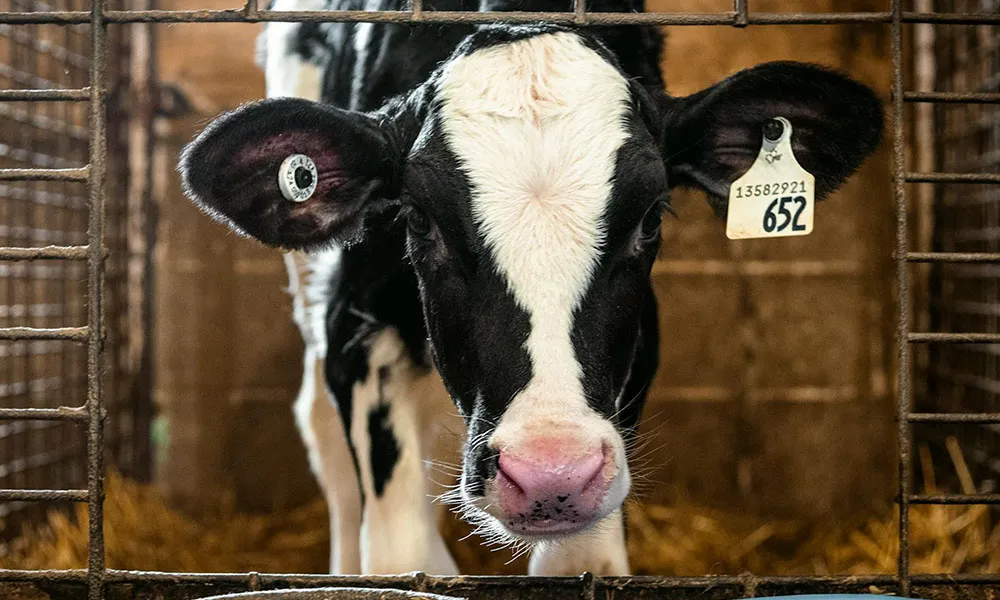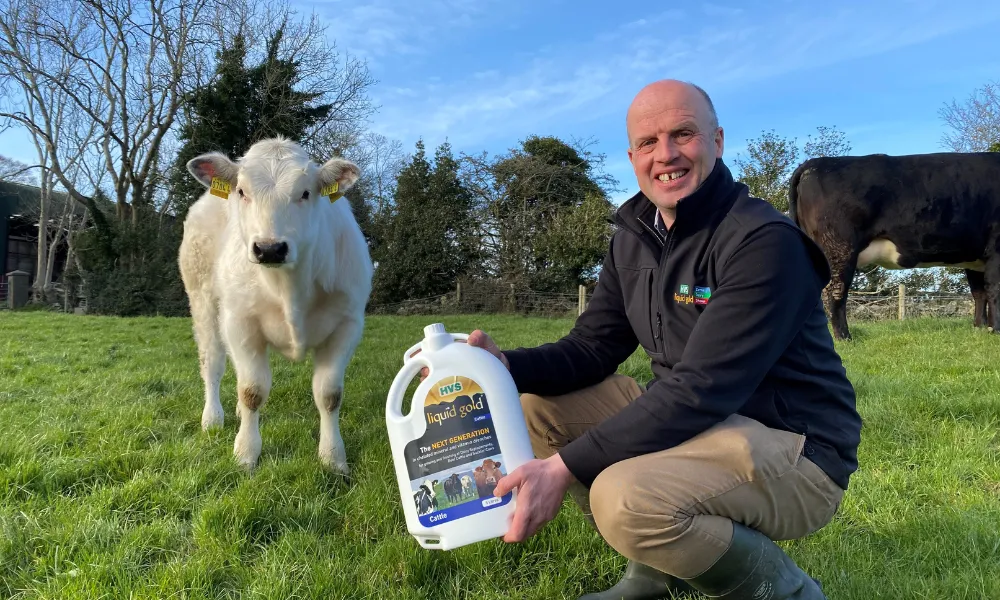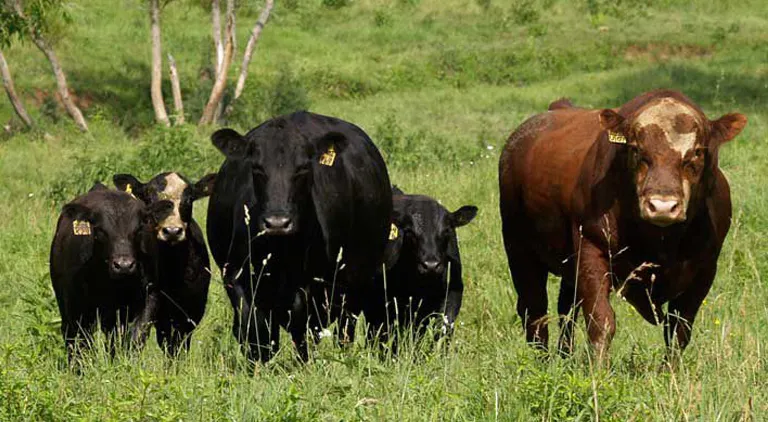
As breeding season approaches, Agridirect offers farmers some advice on the best vitamin and mineral supplements for breeding cows.
Calving season is over: out of the frying pan…
Well, calving season is – hopefully – at an end for most of us. Perhaps we can risk a breather, but only a short one. Days of peace, quiet and leisure time do not feature in the farmer’s calendar.
With this year’s calves up and running on spring grass, our attention turns, inevitably, to the breeding season. A cow’s gestation period is around 247 days, so that leaves a very small window of time before cows go to the bull.
Farmers who had calves in February will put the bull in shortly.
During these mild April days, the astute farmer will consider how he can optimize his breeding herd performance next year. Poor animal management at this time of year can lead to catastrophic losses of calves, cows and, ultimately, farm revenue.
Therefore, it is a good idea to set yourself some targets for the 2022 calving season. If this year’s season was good, aim to make next year’s one even better. If you lost a lot of animals this year, there may be a fair bit of work to do. Now is the time to begin to rectify the problems you encountered over the last few months.
What should my targets be?
We would all like to have a perfect calving season, without a single animal loss.
Unfortunately, that is fairly unlikely. The old adage points out that wherever there is livestock, there will also be deadstock.
But that does not mean that we should not always strive to achieve better, to reduce our losses gradually and consistently, and to come as close as possible to a 100% survival rate.
Teagasc recommends more realistic targets, of course. According to the Teagasc website, the overall breeding targets of a profitable herd include the following:
- An average calving interval of 365 days
- Roughly 0.95 calves born per breeding cow
- A majority of cows calved within the first month of calving season
- A maximum calving season of 12 weeks
- A calf mortality rate of less than 2.5% at birth
- A total calf mortality rate of less than 5% at 28 days
This is a useful guide, and most farmers will feel that these are achievable targets. But the question is: how do we manage to get there? Well there are a few measures that you can take.
Cull cows
First of all, you should cull your breeding herd. Cows that have lost calves this season, are producing inadequate milk to rear their calves, or show poor maternal instinct should be sold off.
Don’t keep on their heifer calves, either, as poor breeding characteristics may be inherited.
Ideally, you should replace cull cows with heifers bred from your best breeding cows.
If you don’t have any replacement heifers, though, you should try to buy in stock from sources that you trust.
Always buy heifers rather than older cows, as these are probably cull animals with a poor breeding record.
Bull fertility
Being sure of the health and fertility of your breeding bull is perhaps the most important part of your preparations for breeding season. This is so essential, in fact, that I intend to do a full feature on bull health and body condition in next week’s blog.
For now, though, suffice it to say that if you have a bull to cover your herd, you need to take every precaution to make sure that he is capable of doing the job.
At a bare minimum, you should have your vet carry out a fertility test on your bull before putting him to cows.
Don’t take prior performance as any guarantee of future success either. A bull may have been fertile last year, but since suffered an injury or disease that has reduced his sperm count significantly.
Cow health and body score
In addition, it is important to ensure that your cows have a good body condition score. Very thin cows are less likely to conceive; but so, too, are overweight ones. Normally, a healthy breeding cow should have a body condition score of 3.0. Now all of this is tied to the point I am coming to.
If you want to ensure that your cows are in peak health when they go to the bull, you need to be certain that they are not deficient in any of the key vitamins and minerals. If your breeding cows are deficient in any of a wide range of vitamins and minerals, their chances of conceiving and bearing a healthy calf decrease significantly.
An abundance of agricultural studies have demonstrated this. Now it’s not always easy to know the right supplement to give your cows in the weeks around breeding season. This is why we at Agridirect have composed a short list of the best mineral and vitamin supplements for breeding cows available for sale in the Republic of Ireland.
Using the following 5 products in the run-up to breeding season, during it, and afterwards, will help to ensure that your cows are in excellent health during the insemination period and during the crucial, early weeks of gestation.
Our favourite supplements
Breeding Cow (Drench)
Breeding Cow is a specially formulated supplementary drench which combines vitamin, minerals, amino acids and trace element. This combination of elements will improve fertility, reduce still births and aid in the overall health of treated animals.
Breeding Cow is ideal for beef cows, dairy cows and replacement heifers in pedigree and commercial herds. This high quality drench contains a total of 13 vitamins and 8 minerals that are crucial to a breeding cow's health.
It is particularly high in copper and zinc, but also boasts high levels of iodine, manganese and cobalt.
The dosage rates for Breeding Cow are included below:
| Category | Dose Volume | Number of full doses per pack: | ||
| 1 Litre | 2.5 Litre | 5 Litre | ||
| Dairy Replacement Heifers | 60 ml | 16 | 41 | 83 |
| Beef Replacement Heifers | 70 ml | 14 | 35 | 71 |
| Dairy Cows | 80 ml | 12 | 31 | 62 |
| Beef Cows | 100 ml | 10 | 25 | 50 |
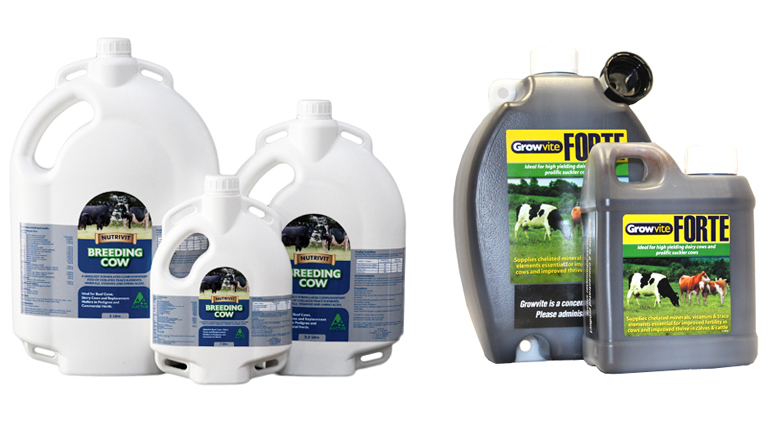 Growvite Forte
Growvite Forte
Growvite Forte is a source of vitamins, minerals and trace elements that are essential for the health and fertility of your cattle.
While it contains a wide array of vitamins and minerals, Growvite Forte is an especially strong source of copper, cobalt, iodine and selenium.
Growvite has science on its side. Trials of the supplement found that conception rates to first service increased 18.7%, from 61.1% without treatment to 79.8% with treatment.
Cows had fewer problems during calving following treatment, and retained placentas were reduced from 7.2% to 1.3%.
The level of barrenness in cows was almost halved, from 4.2% without treatment to 2.5% with treatment.
Allsure (Bolus)
Currently on sale here at Agridirect, Allsure Boluses are organic supplementary intra-ruminal capsules that supply the treated animal with four essential trace elements, copper, iodine, selenium and cobalt.
Allsure Boluses use a slow-release system that supplies treated animals with these elements for up to six months from a single dose. This slow release feature makes Allsure Boluses arguably the most attractive option for the busy farmer.
A single bolus will provide an adequate mineral release for a 6 month period. This means that you can deliver one bolus in the weeks before calving, and your cow’s vitamin and mineral needs will be provided for until the autumn.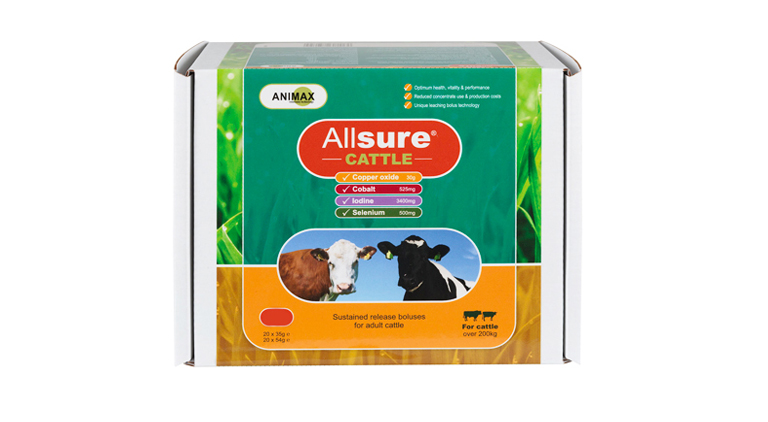
How do Allsure Boluses work?
Well, it’s a matter of a simple 4-stage process:
Stage 1: The bolus enters the first stomach and releases the rods stored within.
Stage 2: The rods are stored in the 1st, 2nd and 3rd stomachs.
Stage 3: Acid in the 4th stomach dissolves the rods
Stage 4: The dissolved rods are passed through to the intestine where they are absorbed into the animals system
Nobody would ever argue that the bolus is not an effective means of getting the required vitamins and minerals into your animal. However, I know that some farmers take issue with the price. And it is true, boluses are a bit pricier than other supplement products. In the long term, though, they probably provide the most peace of mind and that, surely, is value for money.
Mineral buckets
Lifeline
And finally, of course, we have the mineral licks. Once your cattle develop a taste for them, bucket licks are a superb and hassle-free means of ensuring an adequate supply of vitamins and minerals.
Among our mineral licks, Lifeline Pre-calver is a strong choice for breeding cows. Lifeline Pre-calver is a quality bucket lick, and is designed with both calf and cow in mind. It is fortified with a wide array of vitamins, minerals and trace elements, to ensure that cows are in good health before calving.
Studies indicate that this mineral lick can boost colostrum production by as much as 25%. It also helps to boost the immune system of cow and calf, preventing the onset of post-calving health problems such as retained cleanings, milk fever, ketosis, poor dry matter intakes, poor quality colostrum, displaced abomasum, and fertility problems later on.
Even better, Agridirect ships this product in bulk.
You can get a half crate (28 buckets), or a full crate (56 buckets) of Pre-calver shipped directly to your farm.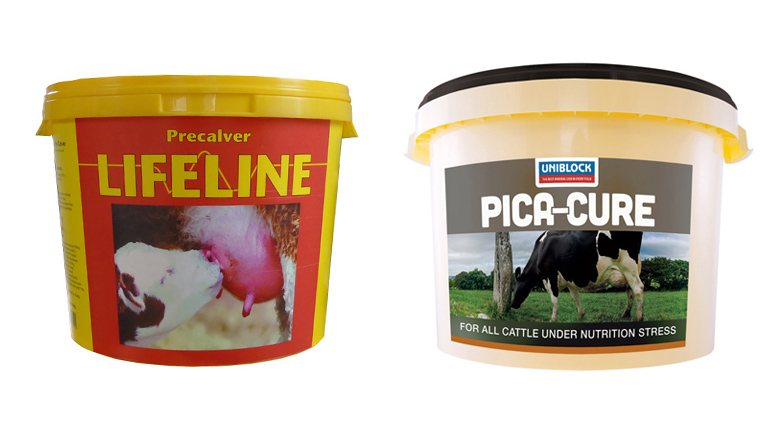
Pica Cure (Lick)
I know I'm cheating slightly here, as this is technically a fifth product. But trust me, it's worth the mention.
Given the time of year, Pica-Cure is a really solid choice for a bucket lick this breeding season.
This product is designed to prevent and treat Pica and general nutritional stress in cattle. It contains the phosphorous that cattle require to prevent the onset of Pica; but because it contains a range of other minerals and trace elements, Pica-Cure is an ideal supplement for supporting the overall health of cattle this breeding season.
Pica-Cure is a cost effective means of disease-prevention in cattle, and will cost approx. 12 cent per animal per day.
Another week, another blog
So those are our thoughts on this week’s topic here at the Animal Medicines Corner. Remember: don't think that just because the worst horrors of calving season are behind you, you can afford to sit back and rest on your laurels. It's fair enough to need a moment to recover. We all need that from time to time. But it’s also important to remember that the path to next spring starts now. A small amount of planning now will make the journey a lot more comfortable. MPG





